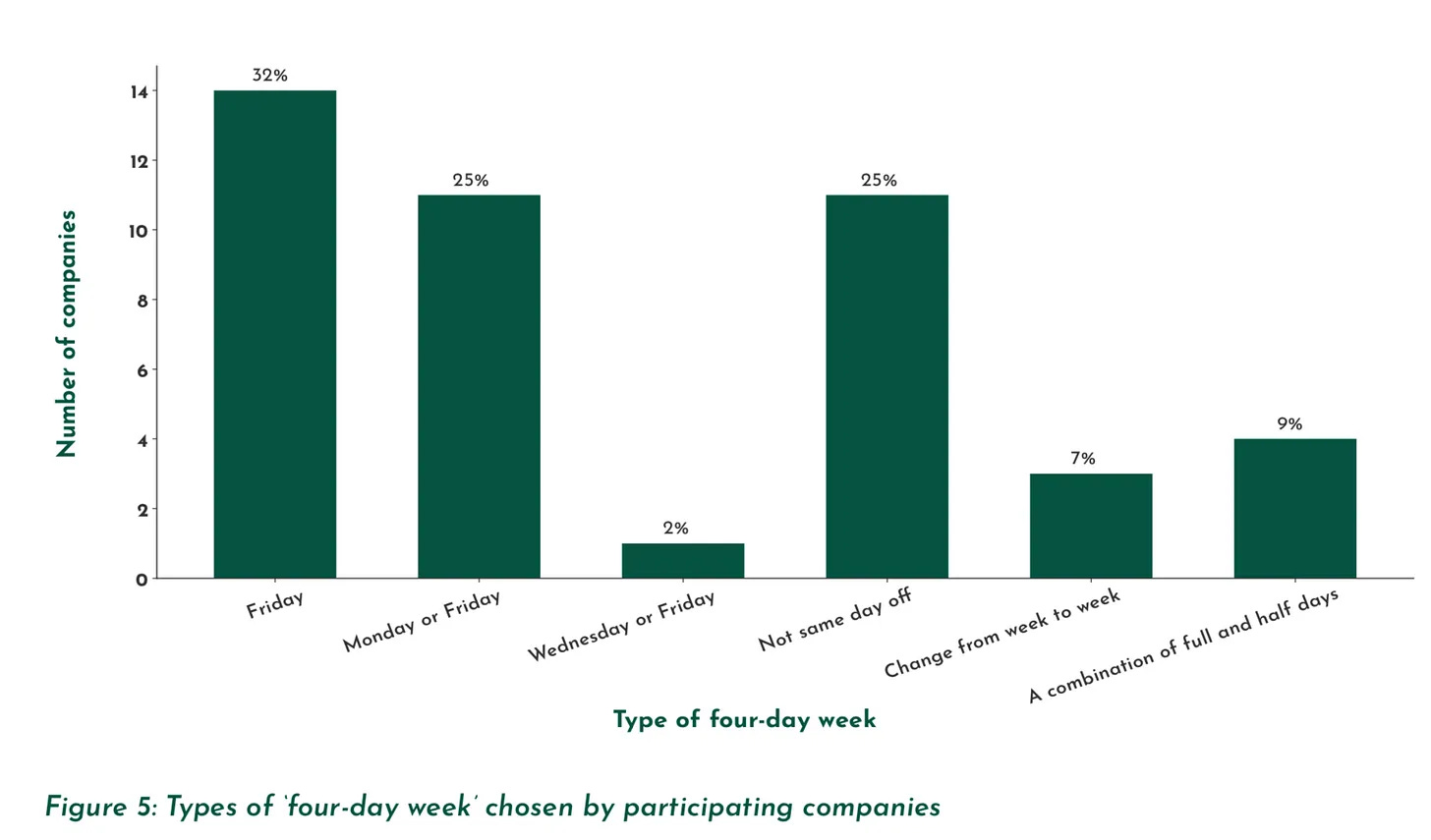The Age of Grievance
John Mauceri | UK Four-day Workweek Trial | Meditations | Weak Ties and Hybrid
Quote of the Moment
If W.H. Auden saw the last century as the Age of Anxiety, we might consider that we are living in the Age of Grievance. We want every story to tell every story, making storytelling all but impossible. But when metaphor is mistaken for reality, creativity, imagination and joy are extinguished.
| John Mauceri, Who’s Afraid of Lydia Tár?
The UK Four-day Workweek Trial
Andrew Curry has penned a solid write-up of the UK four-day workweek pilot:
The headline results are reasonably impressive. 0f the 61 companies that took part, 56 are extending four day working. 18 of these have made the pilot permanent.
The assessment of the pilot draws on various data from the companies that were involved, and interviews carried out before, during, and after the pilot period.
Some of the most extensive benefits of shorter working hours were found in employees’ well-being. ‘Before and after’ data shows that 39% of employees were less stressed, and 71% had reduced levels of burnout at the end of the trial. Likewise, levels of anxiety, fatigue and sleep issues decreased, while mental and physical health both improved.
Of course you would expect that employees would benefit from a shorter working week, but the business data is good too:
Companies’ revenue, for instance, stayed broadly the same over the trial period, rising by 1.4% on average, weighted by company size, across respondent organisations. When compared to a similar period from previous years, organisations reported revenue increases of 35% on average – which indicates healthy growth during this period of working time reduction.
Companies also benefitted from much higher staff retention rates over the pilot period.
There were many different flavors of four-day workweeks:
Some of the reasons for this success might be because each organisation designed its own approach to the four day week, to fit their own culture and their own business requirements. This meant that there were different types of four day week being trialled, as the full report discusses:
Fifth day stoppage: the business closes for an extra day
Staggered: different people take different days off
Decentralised: different departments have different models, depending on their operational requirements
Annualised: the four day week is averaged across the year—in a seasonal business such as a restaurant
Conditional: the four day week is dependent on teams or departments meeting certain KPIs.
Looks like Friday is the new Saturday.
Curry discusses the trial with Ruth Llewellyn “the HR Director of Merthyr Valley Homes, a Welsh co-operative which employs around 250 people and looks after the former council housing stock in and around Merthyr Tydfil, which is one of the poorer parts of the Welsh valleys. It is “Wales’ first tenant and employee mutual housing association.” They are continuing the trial for a full year, but the average score on an employee poll was 9.04 out of 10 in favor of continuing.
Meditations
I am the Philosopher of Work for Sunsama, and here’s some recent work there.
Self-Reflection and The Power of Narrative | Asking yourself self-reflection questions is a good start, but here's how you go pro.
The Problem With Creativity | If creativity is so widely considered critical to innovation and insight, why is it so mysterious?
Archives
The Benefits of Idleness | It’s time to move past the stigma attached to laziness, to wool-gathering and staring out the window.
Calling Bullshit on 'Bullshit Jobs' | New research suggests that David Graeber's arguments were deeply flawed.
Weak Ties and Hybrid
In What Will Make Hybrid Work Stick?, Emma Goldberg discusses the controversy around hybrid work and lays out some things companies are trying, but buries the biggest finding from research she cites.
This reporting applies one of the journalism techniques that attempt to make a general case from a few data points or conversations. But such an approach fails if the reader doesn’t connect the dots.
Business leaders are in a phase of trial and error that comes with staggering stakes. They are figuring out how many days to call employees back to the office, and on top of that how strictly to enforce their own rules. While some companies are in five days a week and others have gone remote forever, many more employers have landed on a hybrid solution, and as they announce these plans they are facing fierce resistance. Amazon recently told its corporate workers to return to the office at least three days a week starting in May and faced an outcry on Slack, its employee messaging system, and Starbucks asked for three days from its 3,750 corporate employees, prompting an open letter of protest.
[…]
Offices reached a crucial benchmark at the start of this year: They’re at half their prepandemic occupancy. Just over half of workers who can do their jobs from home are now combining remote and in-person work, according to Gallup. A closer look at New York, from the Partnership for New York City, found that 82 percent of Manhattan office employers surveyed in late January were maintaining or adopting hybrid policies in 2023. So the corporate experts — McKinsey, Mercer, PwC — have consulted their crystal balls and declared: The future is hybrid.
Hybrid looks vastly different across every office. If the future is hybrid, to many executives that means the future is choose-your-own-adventure. But now the emphasis is shifting from adventure to choice. Executives are making return-to-office plans with more permanence, communicating requirements more clearly after months of hesitation and mushy expectations, though what their plans look like vary widely.
She quotes Nicholas Bloom of Stanford, whose research in the area gives him more credibility than various executives Goldberg cites:
Keep reading with a 7-day free trial
Subscribe to Work Futures to keep reading this post and get 7 days of free access to the full post archives.




